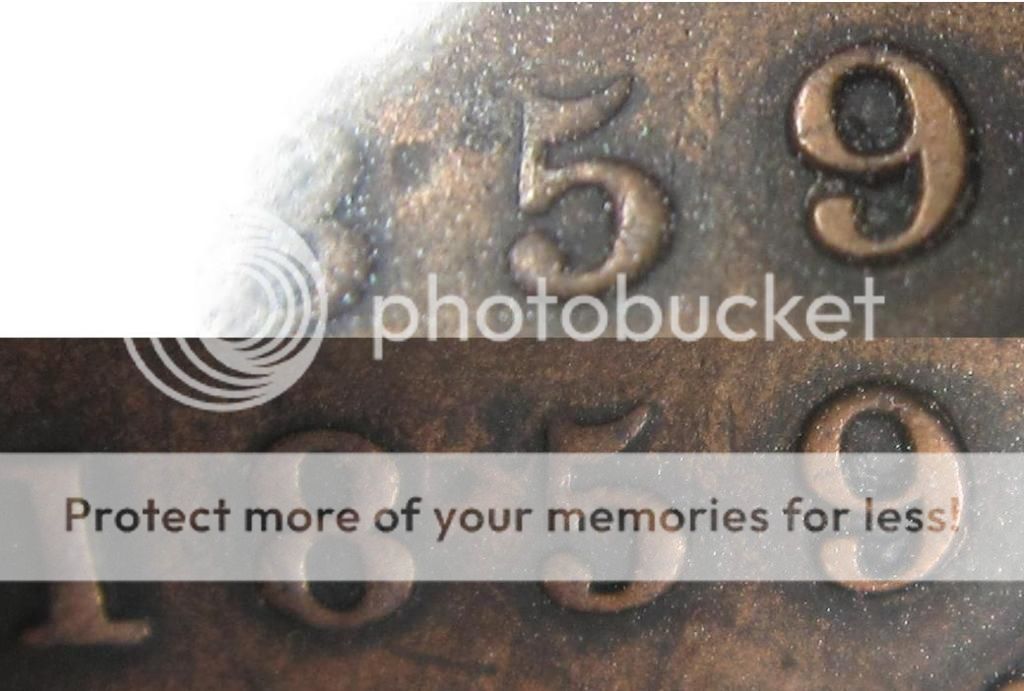Options
Canadian large cent 1859 narrow 9 over 8?
1960NYG's thread with all his 1859 large cents spurred me into getting around to posting about this one. It's an 1859 large cent that appears to be a narrow 9 punched over 8. The 9 is definitely not the same "wide 9" that was normally used. It seems a little bit "bolder" than the narrow 9, but not nearly as fat as the wide 9.
I haven't tracked down exactly what variety #/etc it might be. 1960NYG your thoughts would be most welcome

I haven't tracked down exactly what variety #/etc it might be. 1960NYG your thoughts would be most welcome

http://stores.ebay.ca/Mattscoin - Canadian coins, World Coins, Silver, Gold, Coin lots, Modern Mint Products & Collections
0
Comments
Because of the dirt on your coin, I can't tell for sure but it looks like Turner Reverse die RD2 which was used on 4.0% of all the overpunched dated cents. It is always married with Obverse die OI1, also a Turner number. To learn more about the Provincial large cents (1858 & 59), get a copy of Rob Turner's "The 1858 Cents of Provincial Canada, Vol 2". Volume 1 covers the 1858 mintages of all the denominations as far as historical content goes, and then tracks each of the 1858 working dies. Vol 2 does the same for the 9/8's. His 3rd book, covers the 1876-1901 Large Cents, with working die registers for the 1891's complete. More is coming from him. EXCELLENT books, but you will pay for the knowledge. I worked with him on all of them.
Life member #369 of the Royal Canadian Numismatic Association
Member of Canadian Association of Token Collectors
Collector of:
Canadian coins and pre-confederation tokens
Darkside proof/mint sets dated 1960
My Ebay
I haven't bathed this one in acetone. Not sure if I want to since who knows what might be under that much gunk. There's a few other visible pits in it already.
a bit of aceton and a sharp Hawthorne
cleans out all the crud from the nooks and grannys corners..
and does not harm the coin